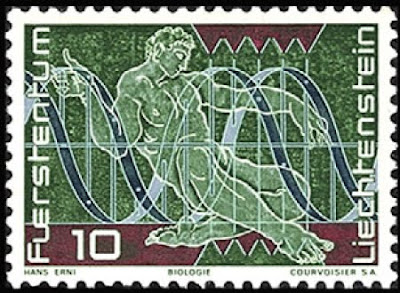 On 30 June 2011 Mozambique released 2 souvenir sheets celebrating the life of Alexander Fleming as one of the most important scientists in the 20th century. Knighted in 1944, Sir Alexander Fleming, a Scottish biologist and pharmacologist, was born 6 August 1881. He discovered penicillin in 1928, pioneering the age of antibiotics, and received the Nobel Prize in Physiology and Medicine in 1945 for it. In 1999, Time magazine named Fleming one of the 100 Most Important People of the 20th Century. As such a famous personality, Sir Alexander Fleming is featured in many stamps. For this issue, the first stamp in the souvenir sheet with 4 stamps features the molecular structure of penicillin, whereas the core structure of the penicillin group of antibiotics is shown on the selvage of the smaller souvenir sheet. The background of both souvenir sheets are filled with white pills, probably an antibiotic.
On 30 June 2011 Mozambique released 2 souvenir sheets celebrating the life of Alexander Fleming as one of the most important scientists in the 20th century. Knighted in 1944, Sir Alexander Fleming, a Scottish biologist and pharmacologist, was born 6 August 1881. He discovered penicillin in 1928, pioneering the age of antibiotics, and received the Nobel Prize in Physiology and Medicine in 1945 for it. In 1999, Time magazine named Fleming one of the 100 Most Important People of the 20th Century. As such a famous personality, Sir Alexander Fleming is featured in many stamps. For this issue, the first stamp in the souvenir sheet with 4 stamps features the molecular structure of penicillin, whereas the core structure of the penicillin group of antibiotics is shown on the selvage of the smaller souvenir sheet. The background of both souvenir sheets are filled with white pills, probably an antibiotic.

